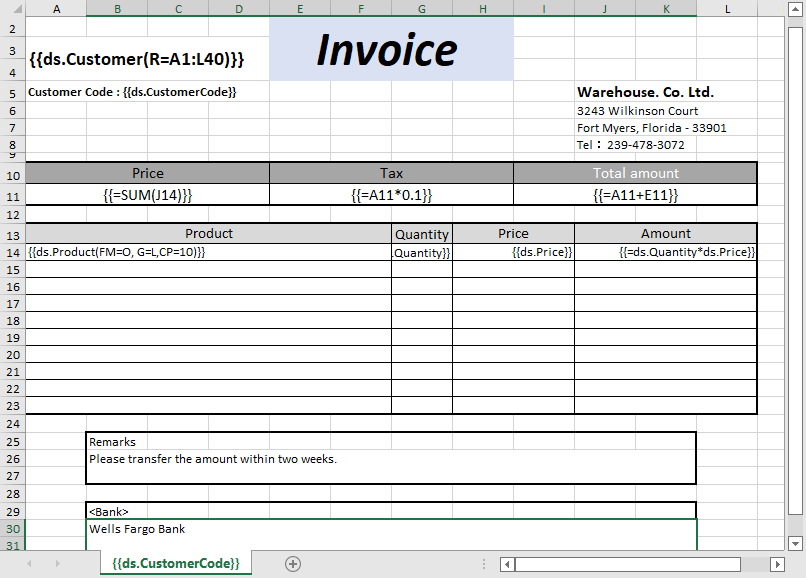Paginated Templates
Paginated template lets you paginate worksheets in a report having the same layout such as invoice, progress report, medical test reports etc. Reports can be paginated in two ways; either by page size or by number of records per page.
The page-size pagination approach is suitable in case of list type reports such as a grocery list, product catalog etc. In this case, a new page or sheet is created when its content goes beyond the specified page size. On the other hand, count-per-page pagination is helpful in generating reports such as invoices which require to be presented in fixed format with specified number of records on a worksheet grouped by particular data field. In this case, remaining records are rendered on other worksheet, thereby paginating the worksheet based on the specified number of records.
DsExcel provides various template properties and functions to cater the two pagination approaches. All of these properties and functions work only in the pagination mode, that is when TemplateOptions.PaginationMode property is set to true. To know more about these properties and functions, see Pagination Properties and Functions.
In a paginated report, name of the page worksheet consists of the name of the template worksheet and its index. For example, if name of the template worksheet is "Sheet1" and it generates two page worksheets, then name of the first page worksheet is "Sheet1_Page1", and that of the second page is "Sheet1_Page2". For more information about pagination mode, see Global Settings.

type=note
Note: In pagination mode:
- DsExcel ignores the Pagebreak template property.
- Shapes or pictures repeat on paginated sheets depending on the pagination rule applied to the upper left corner cell of the area where they are present. If the cell appears in a repeating region of the layout, the shape or picture appears as configured.
Limitations
- DsExcel does not support formula, conditional formatting, data validation, tables, charts in the workbook generated using paginated templates.
- Although DsExcel supports formulas starting with "=" in paginated templates, their export to Excel files is not supported. Supported formulas include "sum", "count", "average", "max", "min", "product", "stddev", "stddevp", "var", and "varp".


